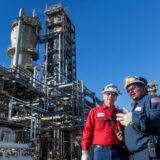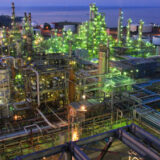U.S. refineries boost octane capacity to meet growing demand from domestic and export markets
U.S. refineries are boosting their octane capacity by installing additional alkylation and reforming units to meet growing global demand for higher-octane gasoline, Platts reported. For example, Tesoro’s “Clean Products Upgrade Project” at its 120,000-barrel-per-day (bpd) refinery in Anacortes, Wash., will add isomerization capacity to produce more octane and will also upgrade gasoline components to make a higher value product for export to Asia.
The economics for adding octane are attractive, due to the spread between isobutane and unleaded 87-octane gasoline.
Rising global vehicle sales account for some of this octane tightness, which is expected to continue at least through 2018.
This market tightness is reflected in gasoline blending component prices, according to Platts. The U.S. Gulf Coast alkylate margin for barges over regular Gulf Coast pipeline unleaded was USD 14.31 per barrel in the first quarter, compared with the fourth quarter 2015 average of USD 13.51, according to Platts’ assessment data. U.S. Gulf Coast reformate margin was USD 25.20 per barrel in the first quarter, compared to the fourth quarter 2015 average of USD 24.55 per barrel.
Chi Chow, managing director of refining research at Tudor Pickering Holt & Co. , an energy investment and merchant bank based in Houston, Texas, said that the U.S. saw the most growth in vehicle miles driven last year in 20 years (3.144 billion vehicle miles). Thus, “U.S. gasoline demand is up 2.9% in 2015, and on an absolute basis, nearly reaching 2005-07 ‘Golden Age’ levels,” he said.
High-octane premium gasoline’s share of total U.S. gasoline sales is also rising, reaching 10.34% in October 2015, compared to 9.66% in October 2014, according to the U.S. Energy Information Administration’s latest report.
Premium gasoline’s share is expected to climb even further this year to about 12% to meet the needs of downsized turbocharged gasoline engines entering the market, said John Auers, senior vice president at Turner Mason & Co., a consulting engineering firm based in Dallas, Texas.
The lightening of the U.S. crude slate has also lifted octane demand, as lighter shale crudes produce light naphtha. While heavy naphtha can produce high octane alkylate, light naphtha makes more isomerate, a lower octane blending component.
“I think that as the Gulf Coast refineries are running lighter crude diets, that we’re out of reforming capacity and become short [on] naphtha,” said Gary Simmons, Valero’s head of refining. He added that with a strong gasoline market, there is an incentive to blend the naphtha into the gasoline pool, which would require high-octane blend components.
U.S. catalytic reforming capacity to make reformates, which adds octane for gasoline blending, has been declining except on the U.S. Gulf Coast.
In addition, some of the big growing export markets have specifications that require high alkylate blends.
The upcoming regulatory changes for U.S. Tier III gasoline in 2017 will lower the maximum sulphur content in gasoline to 10 parts per million (ppm), from the current 30 ppm. This will also increase the need for octane, as lower sulphur typically has an octane-associated penalty.










